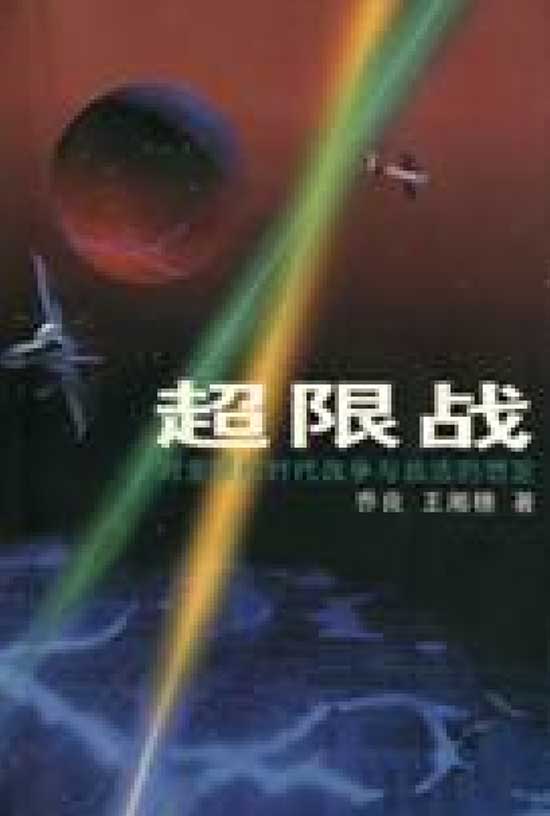Verbal Statement of Lt General David A. Deptula, USAF (Ret)
U.S.-China Economic & Security Review Commission, January 27th, 2011
*** For General Deptula’s response to the written questions see the PDF file of the hearing.
02/12/2011 – Thank you very much for the opportunity to testify today on China’s active defense strategy and its regional impact. The work of the members of the U.S.-China Economic & Security Review Commission is extremely important, particularly at this point in time, when difficult choices need to be made regarding investments in National Security that will prepare the United States for a future where China will play a much more active role around the world than it ever has in the past…..
With respect to the role of space operations in China’s antiaccess strategy, China recognizes the overwhelming advantage the U.S. has in the space domain and its key role in our ability to collect, analyze and rapidly share information. They understand how dependent U.S. warfighters have become upon space products and services for commanding deployed forces, passing ISR data, and enabling precision targeting and engagement.
China views that reliance as a significant, exploitable vulnerability, and has written extensively about the subject in both open source journals and military doctrine. As a result, they are actively pursuing a comprehensive array of space and counterspace programs intended to degrade, disrupt, deny or destroy our ability to gain and maintain access to the region in the event of a conflict.
China maintains a development and deployment program for space weapons including programs on direct ascent anti-satellite weapons — or ASATs — high energy laser and GPS and other types of jammers. The PRC is developing these weapons and technologies as a way to counter U.S. space superiority and to deny the use of space.
Credit: General Deptula For an overview on PRC Evolving Air Power by General Deptula see: https://www.sldinfo.com/?p=14160
China understands the U.S. reliance on space for imagery, signals intelligence, communication, tracking of friendly forces and navigation. As such, they are developing the capabilities to deny the U.S. information at the time of their choosing. Additionally, the threat of space denial, such as through the testing of ASAT weapons, is also an effective counterspace strategy.
Implementation of these ASAT options requires not only the weapons themselves, but also information about the physical characteristics and orbits of the satellites to be targeted and attacked. China currently is developing a Space Object Surveillance and Identification network to improve its space situational awareness.
Publicly, China opposes the militarization of space, and seeks to prevent or slow the development of anti-satellite systems. Privately, however, China’s leaders probably view ASATs, and offensive counterspace systems as force multipliers.
As one Chinese defense analyst noted: “For countries that can never win a war with the United States by using the method of tanks and planes, attacking the US space system may be an irresistible and most tempting choice”. Continued Chinese investment in the design, development, deployment and employment of space and counterspace systems will increasingly challenge our traditional space dominance and could dramatically reduce our freedom of action in the event of a conflict in the region.
With respect to the cyberspace related aspects of China’s area control and antiaccess strategy, control and exploitation of the cyber realm is a key element of the Chinese information superiority strategy, which is an integral part of their overall antiaccess strategy. A key component of the PRC antiaccess strategy is denial of information to the enemy. Cyber capabilities can be used to deny information, either by network attacks or planting false information.
The Chinese have identified the U.S. military’s reliance on information systems as a significant vulnerability that, if successfully exploited, could paralyze or degrade U.S. forces to such an extent that victory could be achieved.
Cyber targets could include computer systems based in the U.S. or abroad, command and control nodes, and space-based ISR and communications assets. Noting the great distances that U.S. forces would need to travel in a conflict with China, attacks against logistics systems could be expected.
The goals of these attacks would be to delay the deployment of additional U.S. forces to the region and to render existing forces in the region less effective or more vulnerable by preventing timely supplies of the materiel needed for war-fighting.
Operations in the cyber domain have the potential to dramatically change the character of warfare. In a recent article by Richard A. Falkenrath entitled From Bullets to Megabytes, he observes that “STUXNET, the computer worm that last year disrupted many of the gas centrifuges central to Iran’s nuclear program, is a powerful weapon in the new age of global information warfare. A sophisticated half-megabyte of computer code apparently accomplished what a half-decade of United Nations Security Council resolutions could not.” Mr. Falkenrath goes on to forecast that warfare in the cyber domain “…will define the shape of what will likely become the next global arms race—albeit one measured in computer code rather than firepower.”
Cyber warfare has the potential to terrorize, isolate, demoralize and cast a country into disarray. U.S. military networks are constantly under siege, and in some cases, intruders have certainly made off with militarily useful data.
However, cyber attacks are not just limited to the military—civilian networks in the US and countries which host our forward deployment bases can be hacked as well. These networks—electrical grids, communications, water supplies, banks and more—provide essential services to military installations and communities around the world and are critical to the day-to-day lives of millions more.
While their impact on the military may seem indirect, any cyber attack which succeeds in creating widespread disruption on a national scale is certain to at least impede, if not debilitate military operations and critical military support functions.
Finally, let me highlight the importance of what the Chinese military calls the Three Warfare’s—that is, psychological operations, influence operations and legal arguments—or what some have called “lawfare.”
These concepts are widely discussed in PRC literature and the open source press. Psychological, influence and legal arguments are not new concepts for the PRC and first publically appeared in a book that many here know well, Unrestricted Warfare, literally “warfare beyond bounds.

For those not familiar with this work, it is a book on military strategy written in 1999 by two colonels in the People’s Liberation Army Air Force. It describes how a nation such as China can defeat a technologically superior opponent such as the United States through a variety of means other than direct military confrontation.
It focuses on using international law and a variety of economic means to place one’s opponent in a bad position and circumvent the need for direct military action. The PRC is currently conducting psychological operations, influence and legal operations in an effort to create a favorable environment for current and future PRC actions.
PRC doctrine introduces the Three Warfare’s concepts also as a way to influence their enemy civilian leadership’s ‘will to fight’.
Additionally, in their document, the Science of Military Strategy, they note that “war is not only a military struggle, but also a comprehensive contest on fronts of politics, economics, diplomacy, and law.”
Each of the Three Warfare’s concepts are separate, but intertwined and many actions that fall underneath these operations are taking place now as the PRC prepares and influences the battlespace in which they will fight future wars, whether kinetic or non-kinetic wars.
Clearly, the PRC understands that achieving National Security objectives involves successful exploitation of all elements of National power, and they are actively planning on incorporating the informational aspects of National power in a way to achieve optimal advantage through their use.
China is currently not a “10 foot tall” threat, but our actions — both economically and militarily — must create the conditions such that they don’t aspire to become one. Our actions should shape a future where as great nations; both China and the United States can partner to seek stability around the world.
Current Chinese military and economic trends should be a wakeup call to the strategic complacency of those in the United States who assume continued United States air and naval dominance in the Pacific.
More directly, it is essential that we move beyond the perspective that appears to have captured many of the security elite in our country that since we’ve been dominant in conventional warfare over the past quarter-century, that we’ll remain so in the future. It’s a convenient presumption, particularly given the current economic environment, but a very dangerous one.
It may play to conventional wisdom to state that the biggest threat to defense is the deficit, and while accurate to a degree, the immutable nature of conflict, and deterrence, is more basic — strength prevails over weakness. The difficult position to take — given the current economic conditions and nation-building engagements that we have elected to pursue — is to articulate the kind of investments we need to make in all elements of our Nation’s security enterprise — diplomatic, information, economic, and military — to secure a position of strength in the next quarter-century…..


